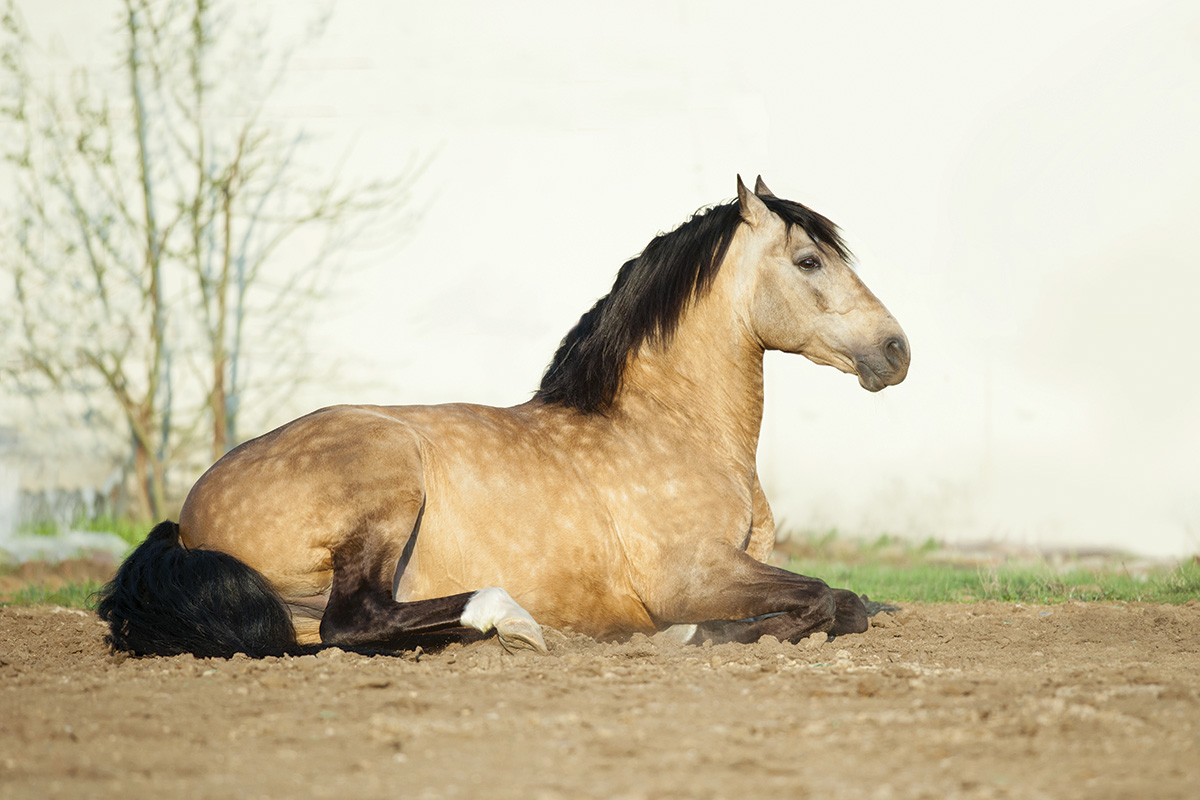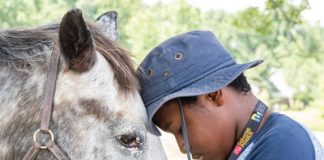I was working my dental float gently into my patient’s mouth when my phone buzzed for the umpteenth time. I ignored it and focused on reducing the large hook on the horse’s first molar. I switched bits and worked on smoothing the sharp points that were damaging the insides of the horse’s cheeks in several places, then finished up on the lower molars, leveling one area and reducing the points that were next to the tongue.

Message Barrage
I sighed and started scrolling through the texts. The first one showed a picture of a chubby white dog looking sad. The message read: “Hi, my dog needs spayed, she’s draining white stuff, and the rip-off vet said it would be between $4-5K and that’s too much, and will you do it cheaper?”
“I’m a horse vet,” I texted back. “There’s a hospital in Denver that may work with you on cost—ask your veterinarian for their phone number.”
The return text came in almost immediately, as I knew it would, asking for the hospital’s phone number.
The next text was a shaky video of a newborn foal walking away from the camera, and what did I think of her front legs? I ignored that one and opened the next, which was a request for a Sunday night prepurchase exam on a horse that would be at the evening rodeo in town, and could I meet them after the rodeo ended around 10 or 11 p.m. and do a lameness exam and take X-rays of hocks and stifles only? And she didn’t want to spend a lot. My initial response was a little colorful, so I deleted it and responded with a professional and polite, “No.”
There were several more messages from regular clients wanting appointments and a question about strangles, which I answered quickly, but the last text began with a dim and blurry picture of a horse in a stall. I zoomed in on the photo and could see that he was a dun color and was lying down, but I couldn’t see much else.
The message simply read: “Hi Dr. Diehl, can you come take a look at a cut leg? Happened a few days ago.”
Looking for Drom
I tried calling the number. There was no answer, so I left a message with lots of questions about the injury. It’s a mathematical certainty that the longer of a message I leave, the sooner the client calls back and the less likely it is that they’ve listened to any of it. Sure enough, the phone rang within five minutes and a chirpy woman was explaining that she hadn’t listened to my message.
“But we’re very worried about Drom, Dr. Diehl. Can you come right away?”
Drom? I knew I didn’t have a horse on my books by that name, and the owner explained that they were new to town. I repeated my questions about the injury, but after listening to her answers, I switched my next appointment and drove straight out to see poor Drom, who was clearly in bad shape.
I pulled up to a series of newly painted red-and-white outbuildings. A cheerful sign read Wrinkled Knee Ranch. There didn’t seem to be anyone around, but a dun horse’s head briefly appeared in a nearby window, and I knew I’d found my patient. I peered into the stall to see a very fat gelding munching hay from a feeder and resting a hind leg.
When no one had appeared after a good five minutes, I decided to examine Drom. There were no obvious swellings or cuts anywhere, but there were some crusty scabs on the pink skin on his hind pastern, and he flinched when I pressed on the area.
I was preparing a speech about pastern dermatitis with a few firm sentences on how it wasn’t really an emergency, when a woman appeared in the doorway of the stall looking at me strangely.
“Why are you looking at Andy, Dr. Diehl? Drom is over in the next barn.”
Helping An Unlikely Animal
I straightened up just as Andy unloaded a very wet pile of manure down my leg. The woman didn’t seem to notice, and I limped quickly after her, trying to shake the stinky mess off my pants.
She opened the top half of a large Dutch door and an enormous brown head emerged and blatted loudly at me.
“Oh, you have a camel!” I said stupidly. He’s cute!”
She gave me another strange look. “This is Drom. Your patient?”
I recovered quickly. “Of course! I meant that Drom is very cute! Let’s take a look at that leg!”
She haltered Drom and led him out of his large stall bemusedly. I started clipping and cleaning a deep laceration on his upper leg. I numbed the wound with a very small dose of lidocaine, as camelids can be sensitive to the drug, and soon had the wound stitched up neatly. Drom was a perfect gentleman, and the woman clapped her hands in delight as she inspected my work.
“You know your camels, Dr. Diehl. A lot of vets are afraid of them, but Drom and I can tell that you really know what you’re doing!”
The only other camel that I’d treated was in vet school, 15 years ago, but it didn’t matter. I was clearly a camel master now, and I headed proudly to my truck.
I was pulling out of the driveway when she hollered after me.
“But maybe practice your horse handling skills a little more so you won’t get crapped on next time!”
This Vet Adventures column about a vet helping an unlikely animal appeared in the October 2021 issue of Horse Illustrated magazine. Click here to subscribe!





